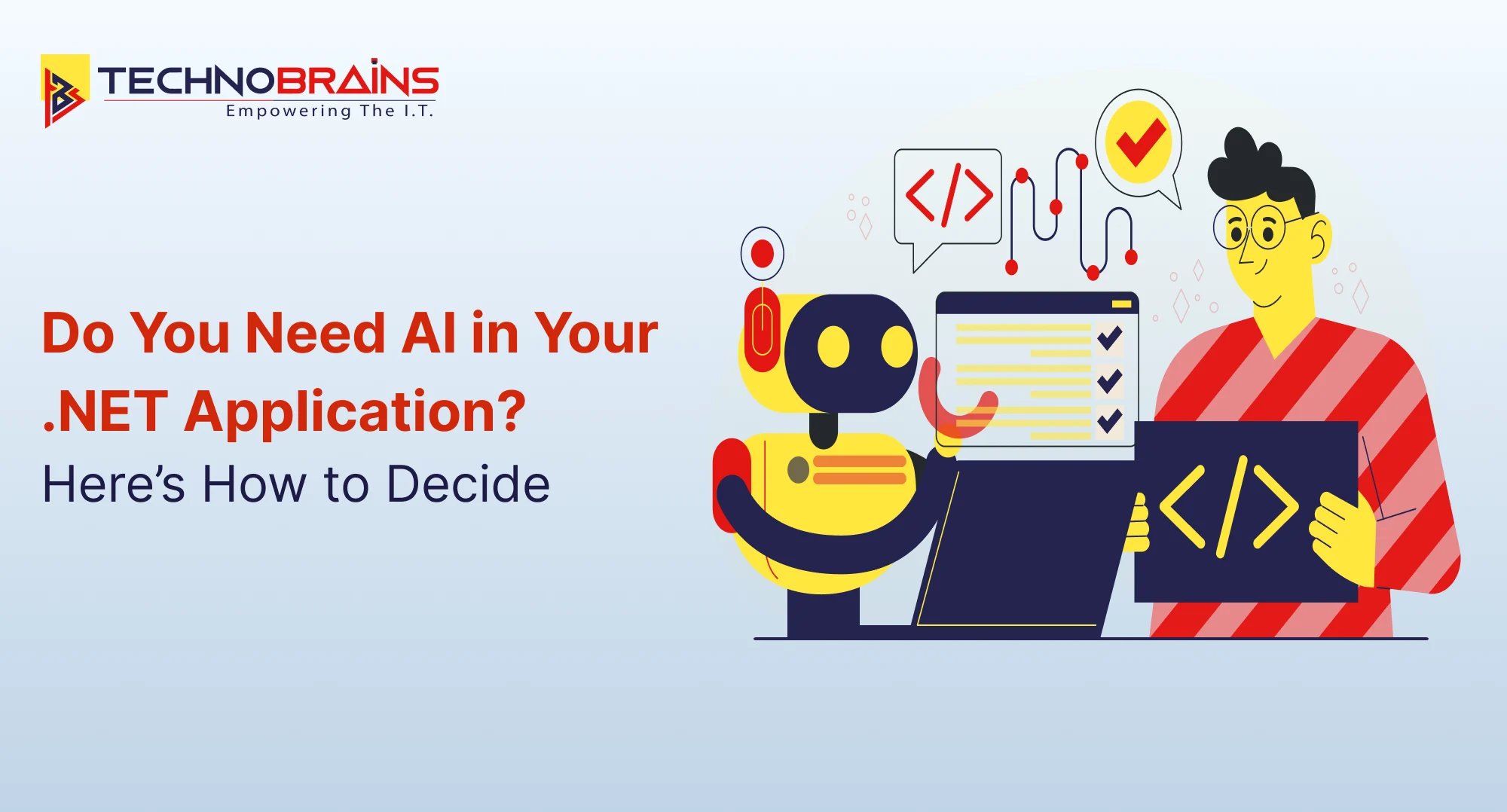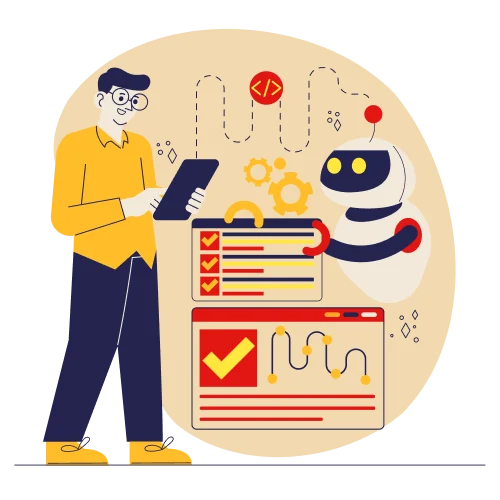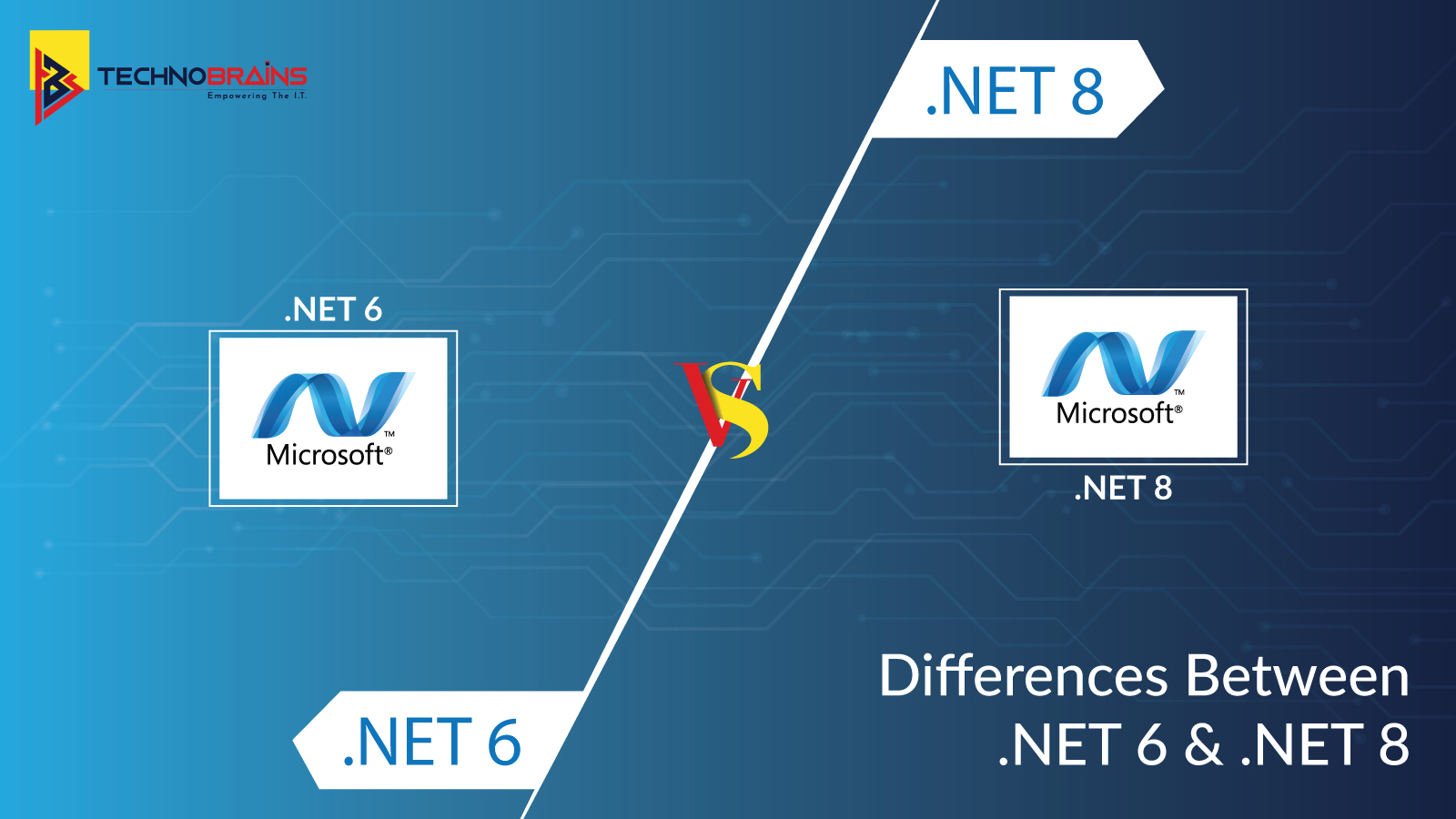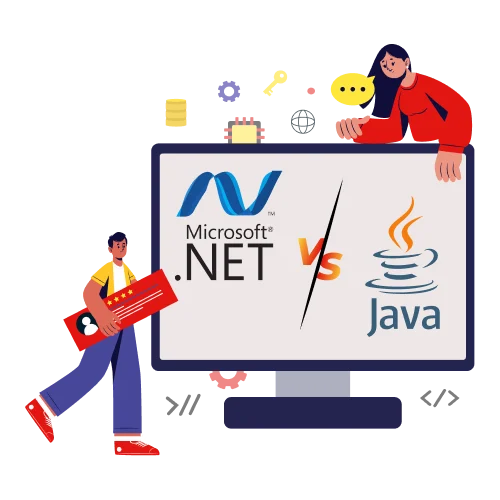Get 40 Hours Free Developer Trial
Test Our Developers for 40 Hours at No Cost - Start Your Free Trial →
As we know, AI and ML can substantially improve productivity by automating workflows and processing complex data with updated data analysis. However, not every .NET app needs these capabilities. Many businesses rush to implement AI without evaluating whether it matches their goals. Our experience as specialists in .NET software development shows both successful integrations and unnecessary complications.
This article will help you determine if your .NET application needs AI. Our .NET development service experience enables us to guide you through the integrations, costs, and their alternatives. You’ll be able to make the right decision about AI integration in your .NET project.
When Does a .NET App Actually Need AI?
Don’t add AI to your .NET application just because it’s the latest trend. Instead, look for clear signs that demonstrate how AI can add value and improve your project and business.
Common signs your app can benefit from AI
Your .NET project is ready for AI when you see these signs:
- Data processing demands are overwhelming. Artificial Intelligence is excellent at handling and analyzing vast amounts of data. When your software/app can’t handle large volumes of data that need meaningful insights, AI can turn this challenge into a real advantage.
- Repetitive tasks consume resources. Apps that spend too much time on routine tasks like sorting documents or responding to customer questions are perfect candidates for AI automation.
- Users want more personal experiences. AI can study how people use your app and deliver custom content, recommendations, and services that substantially boost user involvement.
- You need to predict future trends. AI-driven prediction models give you a real edge, especially when forecasting things like inventory needs or customer behavior.
- Visual or language processing is needed. Apps that must understand images, interpret text, or process speech can use AI to handle these complex tasks.
Business goals that line up with AI capabilities
AI works best when it matches your business needs.
- Better efficiency and productivity are what most companies want from AI. The development team can focus on breakthroughs instead of maintenance because AI simplifies processes.
- With AI, a better customer experience comes naturally through personalization, round-the-clock chatbot support, and more user-friendly interfaces.
- Decision-making becomes easier when AI analyzes complex data to find valuable insights humans might miss.
- Standing out from competitors happens when companies use AI well and offer unique features that others don’t have.
- Companies that want to reduce risks through fraud detection or boost security find AI especially helpful in spotting unusual patterns and suspicious activity.
Before adding AI to your .NET project, ensure you know exactly what problems AI will solve for that particular project. The best AI projects tackle specific business challenges you can measure and track.
Evaluating the Costs and Complexity of AI Integration

You should understand how AI integration affects your finances before you start this experience with your .NET application. The costs go beyond the original development. Your budget must account for long-term commitments that can substantially affect your bottom line.
Development and infrastructure costs
The initial costs of developing AI depend on the complexity of your project. Small to medium-sized AI projects typically cost between $50,000 and $500,000. Costs for large-scale implementations range from $500,000 to more than $5,000,000. Custom chatbots cost up to $600,000, while custom analytics systems cost around $35,000.
Your infrastructure adds another expense layer. AI models need specialized hardware, GPUs, and TPUs to train sophisticated models. On top of that, it needs data storage solutions like cloud services, databases, or data lakes that increase your overall investment. A well-laid-out .NET application with AI capabilities needs proper computing resources that grow with your project.
Time and resource investment
The personnel requirements go beyond just money. AI integration needs specialized expertise, data scientists, AI engineers, and domain experts who earn premium salaries. Your staffing approach shapes your budget. In-house teams cost more with hiring, benefits, and wages than offshore .NET development options.
Project complexity determines how much time you’ll spend. Data preparation takes considerable time. You need to collect, clean, label, and format data to ensure model accuracy. Testing can add 10-20% to your development timeline and cost.
Maintenance and model retraining
Many people overlook the ongoing maintenance costs of AI integration. AI systems need constant monitoring. Annual maintenance costs range from $5,000 to $20,000+. Data patterns change over time, and models lose performance accuracy; experts call this “model drift.”
Regular retraining helps fix this drift. Based on your data volume and model complexity, your retraining expenses can range from $10,000 to $100,000+ per cycle. Different industries need different retraining schedules. Some applications need monthly updates, while annual refreshes work for others.
Your AI costs in .NET development show up over time. You’ll see them through continuous monitoring, performance checks, and regular retraining to keep your system accurate.
Also Read, Detailed Guide to Integrating AI & ML with .NET Applications.
How to Decide: A Simple Framework for .NET Teams
A structured approach helps development teams make practical decisions about AI integration. A simple framework that allows .NET teams to review if that truly adds value to your applications.
Define your use case clearly
Your first step should be identifying specific problems where AI provides solutions instead of using technology that searches for an application. You must outline your objectives and predicted outcomes for adding AI.
These questions need answers:
- What business problem am I trying to solve?
- How will AI address this problem better than conventional programming?
- What metrics will show success?
Clear key performance indicators (KPIs) are important because they track progress toward your business goals. KPIs help translate business problems into AI questions that implementation can answer. This clarity helps everyone understand what success means in business terms, not just technical wins.
Assess data availability and quality
Data creates the foundations of every AI project. AI models cannot learn or work properly without the correct data. Before development starts, you should review:
- Data quantity: You must know if you have enough data volume to train models.
- Data quality: Good data needs accuracy, completeness, current information, and proper labels. Poor data choices without diversity often cause model failure.
- Data integration: Scattered data across systems creates a big challenge. To work effectively, one predictive maintenance project needed to combine machine cycle data from one system with component replacement data from another.
Match the right AI Tool to your problem
Your data characteristics and problem type determine which tools you should pick:
Statistical analysis and classical regression models are enough for smaller structured datasets (hundreds to thousands of rows). Linear regression, support vector machines, or artificial neural networks work better when you handle millions of rows of structured data.
Large unstructured datasets need advanced deep learning, natural language processing (NLP), and natural language understanding (NLU). The .NET ecosystem gives you several options:
- ML.NET for classification, regression, or recommendation systems
- ONNX Runtime to leverage pre-trained models
- Azure Cognitive Services for pre-built AI capabilities without building models from scratch.
Your long-term maintenance and integration will work better when you choose frameworks that fit your existing .NET development stack.
Alternatives to AI: When Simpler Solutions Work Better
The AI hype doesn’t mean every .NET application needs complex machine learning capabilities. Simple solutions often work better and cost less.
Rule-based logic vs. machine learning
Rule-based systems use predefined “if-then” statements that developers create. This differs from AI, which learns from data patterns. When problems have clear definitions and straightforward rules, these predictable systems shine. .NET apps that handle structured tasks like data entry, document classification, or fraud detection can benefit from rule-based AI.
Rule-based approaches are simple and affordable because they don’t need extensive data collection or training. They also excel at repetitive tasks that require high precision. Machine learning makes them perfect for fields where mistakes aren’t acceptable, like medical diagnosis or financial processing.
The downside is that rule-based systems can’t adapt like machine learning models. They struggle with unclear or complex situations. Manual updates are the only way to change them, which limits their use in changing environments.
Using analytics without full AI
.NET applications can get great results from reliable analytics without using AI. C# analytics helps track user behavior, product performance, and business metrics. AI gives you helpful information about your app’s funnel and core metrics. Google Analytics works well with .NET applications, too. It tracks how users move through your app and what they do.
These analytics tools give you valuable business insights right away. You won’t need to deal with complex AI integration
When to delay AI adoption
There are good reasons to wait before adding AI to your .NET project:
Poor data quality makes AI useless.
If time or resources are tight, traditional development methods might be your best bet. The numbers back this up – all but one organization doesn’t use AI in software development. Most companies still get results with standard approaches.
Legal and compliance issues create significant hurdles, too. A recent study shows that 77% of executives say data privacy stands in the way of AI adoption.
Conclusion
Integrating AI into your .NET application requires careful consideration of several key factors. The above article shows that AI capabilities pack a punch but might not be the best fit for every application.
AI works best when you can spot specific business problems where machine learning adds real value. Teams should review their data quality and infrastructure needs. They also need to look at what it costs to maintain over time.
Simple alternatives like rule-based systems or traditional analytics help many applications achieve great results. These options often take less time to implement and cost less to maintain while meeting business goals.
Your application’s real needs should drive the choice to add AI, not just what technology trends. The solution you pick – AI or conventional – must tackle your business challenges head-on and bring clear value to users.
AI integration isn’t a one-off choice – it’s a trip that needs constant review as your application grows and business needs shift.
Ready to Explore AI for Your .NET Apps?
Talk to our expert today and find out if AI is the right fit for your business needs.








